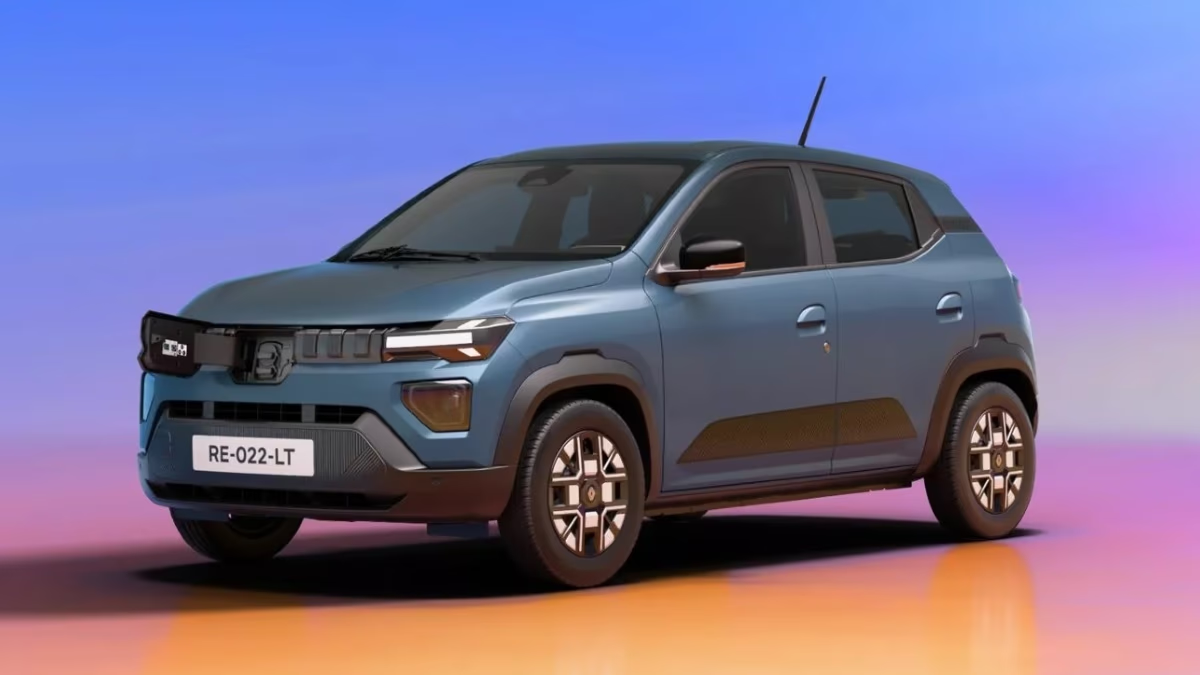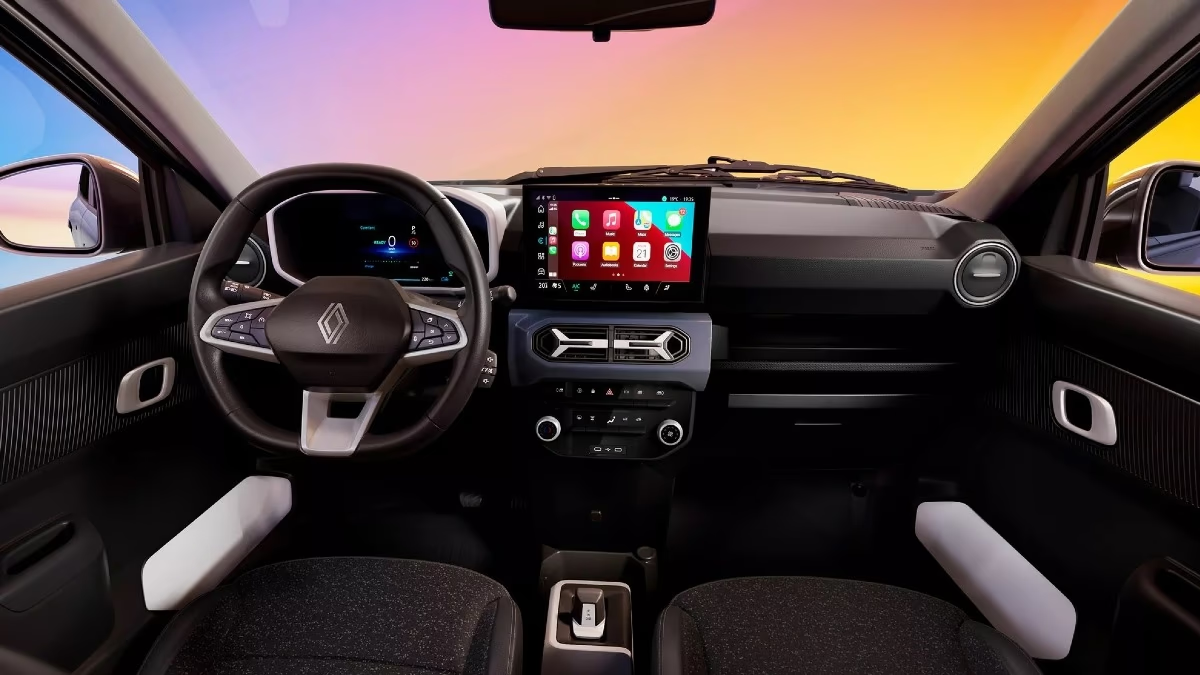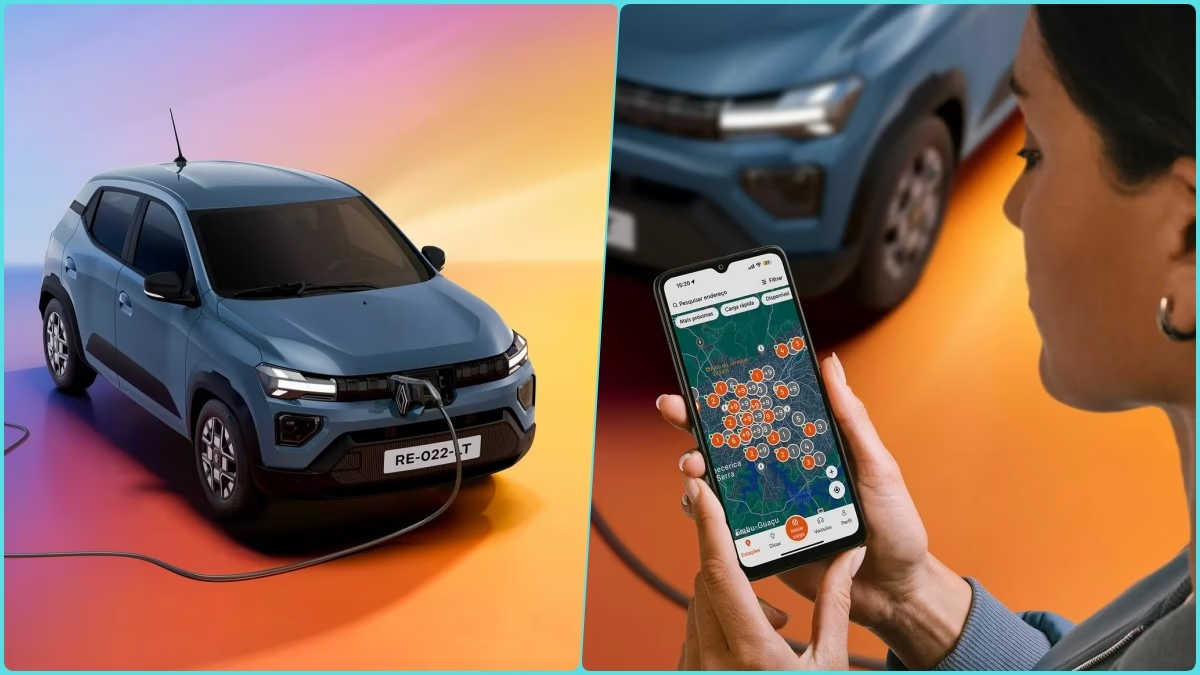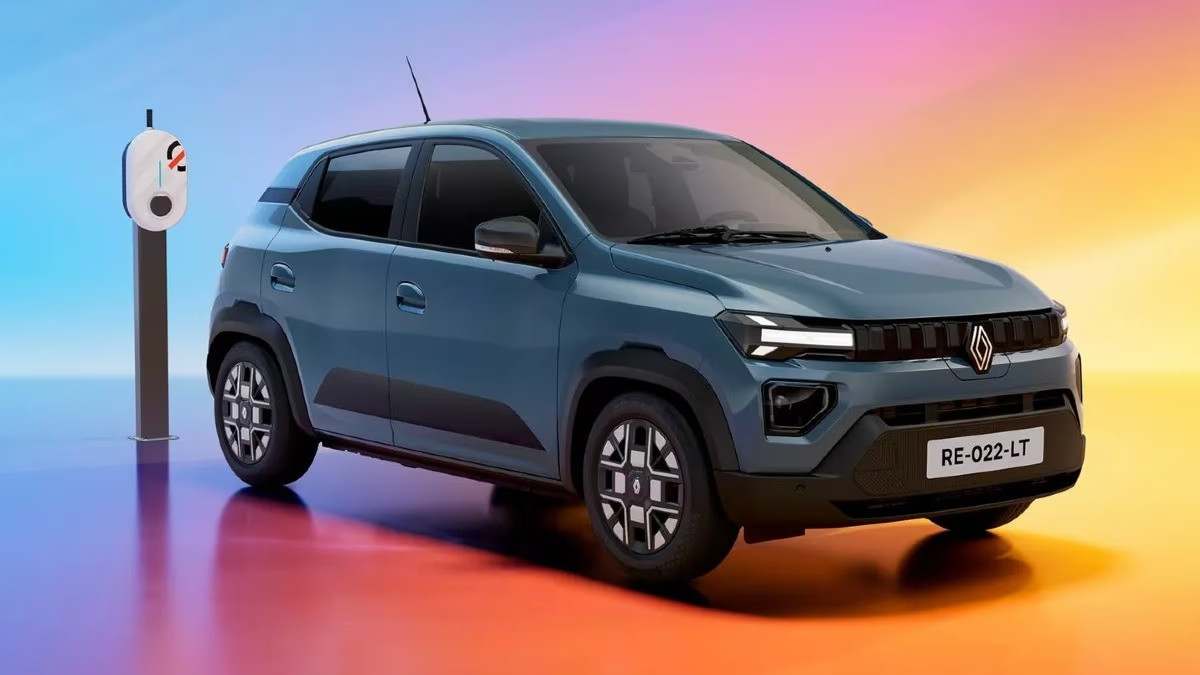Renault has finally unveiled its eagerly awaited electric hatchback, the Kwid EV, in Brazil, where it will be marketed as the 'Kwid E-Tech.' The petrol version took the Indian entry-level car segment by storm, and now, it is poised to write a new chapter in its electric avatar.
This car marks a significant step in Renault's electrification strategy. Interestingly, test models have been spotted multiple times on Indian roads, indicating that Renault might soon launch it in the Indian market. If that happens, this car will directly compete with popular electric hatchbacks like the Citroen eC3 and Tata Tiago EV. Let's dive into the details of this new electric car!

Source: aajtak
The Kwid EV is based on the Dacia Spring EV platform, already quite popular in the European market. Its design nods to its petrol version, but with distinctive changes to accentuate its electric personality. A closed grille and vertical slats give it a solid electric look, with projector headlights placed on either side of the bumper.
The Kwid E-Tech's exterior boasts elements that differentiate it from other small EVs. It features integrated turn indicators on ORVMs, 14-inch steel wheels with dual-tone wheel covers, and chunky wheel arch cladding, lending it a robust and sporty stance. Additional touches include black door claddings, flip-up style door handles, and signature EV badging that enhance its modern appeal.
Despite these intriguing design elements, the launch color palette feels somewhat bland. The shades used in Renault's press images don't match the eye-catching appeal of the Dacia Spring EV, suggesting that while the features are strong, the color variety and visual appeal still trail behind Dacia.

Source: aajtak
Inside, stepping into the Kwid EV reveals a complete transformation from its past versions. It includes a 10.1-inch touchscreen infotainment system supporting wireless Android Auto and Apple CarPlay. Additional features include a 7-inch digital instrument cluster, USB-C ports, and a height-adjustable steering wheel, along with 290 liters of boot space.
Safety has been thoroughly addressed by Renault. The Kwid EV includes modern safety technologies, such as 6 airbags, Electronic Brakeforce Distribution (EBD) with Anti-lock Braking System (ABS), Electronic Stability Program (ESP), hill-start assist, rear camera, TPMS, seatbelt reminders, and ISOFIX mounts. Additionally, Level-1 Advanced Driver Assistance System (ADAS) features are incorporated for enhanced safety.

Source: aajtak
As for the powertrain, the Kwid EV houses a 26.8 kWh lithium-ion battery pack, reputed to provide around a 250-kilometer range on a single charge. Its electric motor generates approximately 65 hp, making it perfect for urban driving.
While Renault India hasn't officially disclosed the launch timeline for the Kwid EV, the repeated glimpses of its test models on Indian roads suggest a possible launch by 2026. If launched, the Kwid E-Tech could become one of the most affordable and stylish electric hatchbacks in the country, much like its petrol-powered predecessor revolutionized the segment a decade ago.




